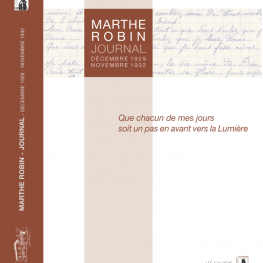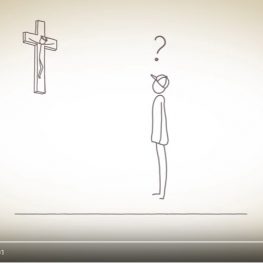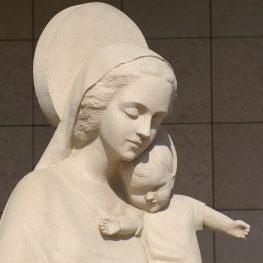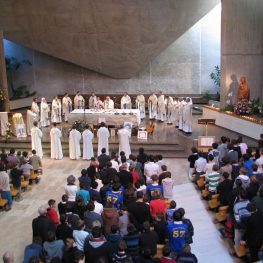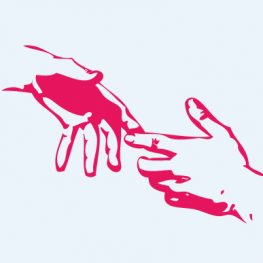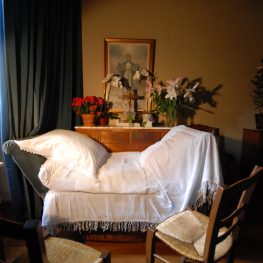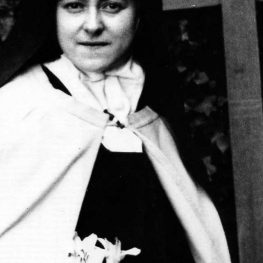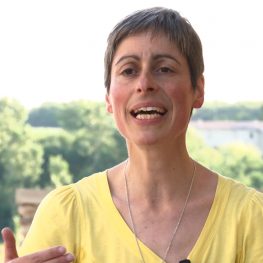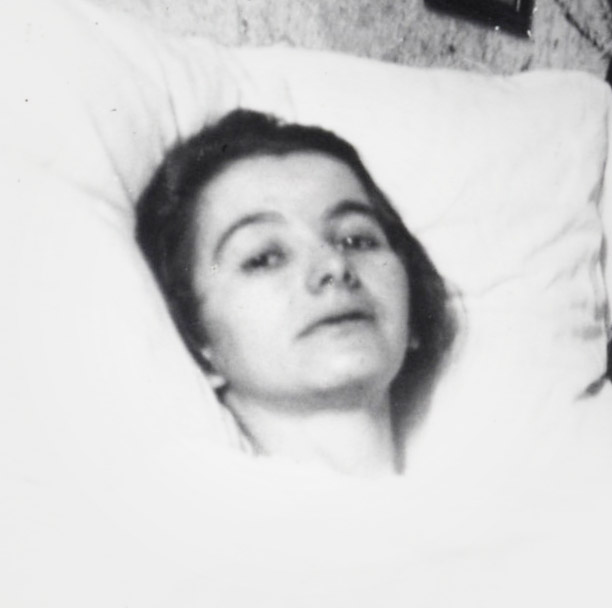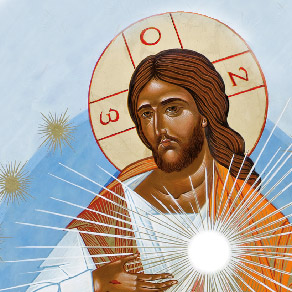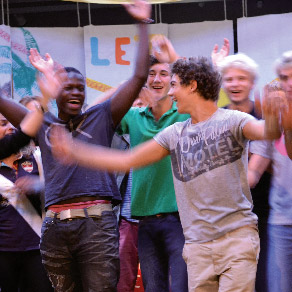Le cheminement intérieur de Marthe Robin est dévoilé grâce à la publication de son "Journal". Découvrez-le en ligne...
Her life
The ordeal of illness
Marthe Robin grew up like all the other young girls of the rural communities of France in the early twentieth century. She had a simple childhood within a farming family of the Galaure, in the hilly region of the Drôme. She was raised in the Christian faith but religious practice was dependent on the work that needed to be done in the fields and the distance from the parish, which was several kilometres away from the family farm. Her life was turned upside down by the disease that struck her.
As a young girl, Marthe was described as a mischievous, lively and intelligent child, despite her delicate constitution. She was frequently sick and survived the typhoid fever that took one of her sisters. At the age of 16 years old, she began to experience persistent migraines. Fever, then vomiting, and finally fainting fits succeeded each other for a few months.
Struck by an incurable disease
In December 1918, she fell into a coma. The doctors were at a loss: at first, she was thought to have a cerebral tumour, and then the illness was attributed to the Spanish influenza. Severe migraines, fevers, sudden and total stiffness of the whole body, comas, intense weakness of the limbs, blurred vision and extreme sensitivity to light, with periods of remission and periods of relapse: all these symptoms indicate that Marthe was suffering from lethargic encephalitis.
The disease progressed in stages, with periods of improvement and deterioration.
At the age of 17, she became paralysed in the legs; At 28, a second outbreak caused the total paralysis of her digestive tract; a third outbreak reached the optic nerves in 1939, at the age of 37. Light made her suffer very much. She had to live in darkness.
Dealing with the absurdity of suffering
Marthe was therefore very young when suffering, the degree of which she had not known until then, became part of her daily life. To the pain was added another injustice, that of solitude. A rumour spread in the village of Chateauneuf-de-Galaure that Marthe was suffering from the terrible Spanish influenza: very quickly, nobody came to see her, despite the fact that she was so sociable and so fond of visits.
In the space of a few years, she saw everything collapse around her. Any plans she had for the future were now impossible. A vocation of any kind seemed out of the question. She became a burden for her family. Her horizon became restricted to the half-closed shutter of her room, because she found it hard to bare the light of day. Her only prospects for the future were to wait for the outcome of an unforeseeable illness that had its periods of remission followed by terrible relapses: "Everyone can, and must fulfil his vocation but not me... Life saw to it that my illusions were taken away and my plans destroyed."
To her great friend, Madame Delatour, she wrote in 1928: " I feel physically and morally broken and would be much better in the earth than above it, in my opinion. (...) My sweet friend, you who are so good and who understand me so well, you will forgive me for my great lack of courage."
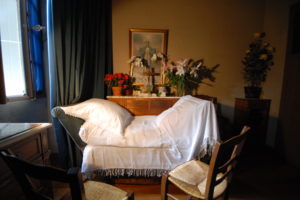
Everyone can, and must fulfil his vocation but not me... Life saw to it that my illusions were taken away and my plans destroyed.
United with God, her life took on a new meaning
In fact, it was the realisation that she would never again have any control over her life that became the decisive moment on Marthe's spiritual path. The beginning of this journey was the fruit of a crucial encounter she had with some Capuchin monks who, during a parish mission, came to visit her in 1928. They were the ones who helped her to understand that even suffering can be used by God for the salvation of souls. Faced with the glaring injustice of the only avenue that lay before her, she took two fundamental decisions. The first was to continue living in spite of everything rather than seek death or put an end to her own life like her brother Henri was to do later. She said to God that she was prepared to live for a long time if he deemed it useful. The second was to unite this broken life with that of Christ. Thus, Marthe, while meditating on the Passion, would experience the sufferings of Jesus – the arrested, tortured and crucified Jesus – more and more intensely out of love for all men.
Her fight against the disease
Marthe was uncompromising in her attitude towards the suffering. More than any other person, perhaps, she did everything she could to avoid the pain. She followed the instructions of her doctors to the letter, tried to curb the terrible migraines which overwhelmed her by reading in spite of everything, and did not at all resign herself to losing the mobility of her limbs, which she would exercise as much as the remissions allowed. She would also force herself to do embroidery work despite the stiffness of her fingers, despite the double vision and despite the terrible migraines, until it became absolutely impossible. Behind this obstinacy was a very real anxiety: that of being able to pay for her own medicines and not be dependent on her parents.
A dramatic consequence of the paralysis of her digestive tract and the complete atrophy of her oesophagus was that Marthe could no longer eat anything, except for the Holy Communion that she received once a week. Such an intake is nowhere near enough to keep someone alive under normal circumstances.
Marthe's joy brings clarity and light
The pain did not prevent the mischievous young girl from becoming an adult who loved to laugh and with whom one would find peace.
One of her relatives gave the following account: « when she sensed that we were a little anxious in her presence, she would say: « I will tell you the latest [funny] story told me by the students of Saint Bonnet [school founded by the Foyer de Charité]". She would immediately make us feel comfortable. When I don't feel well, I think of Marthe's laughter and joy and it gives me strength.»
Although Marthe was sick for almost her entire life, the illness was not the centre of her life. The centre was Christ. Her suffering became the channel through which the mercy of God could reach those who came to her. Her afflictions were transformed into sources of life and hope.
To read :



